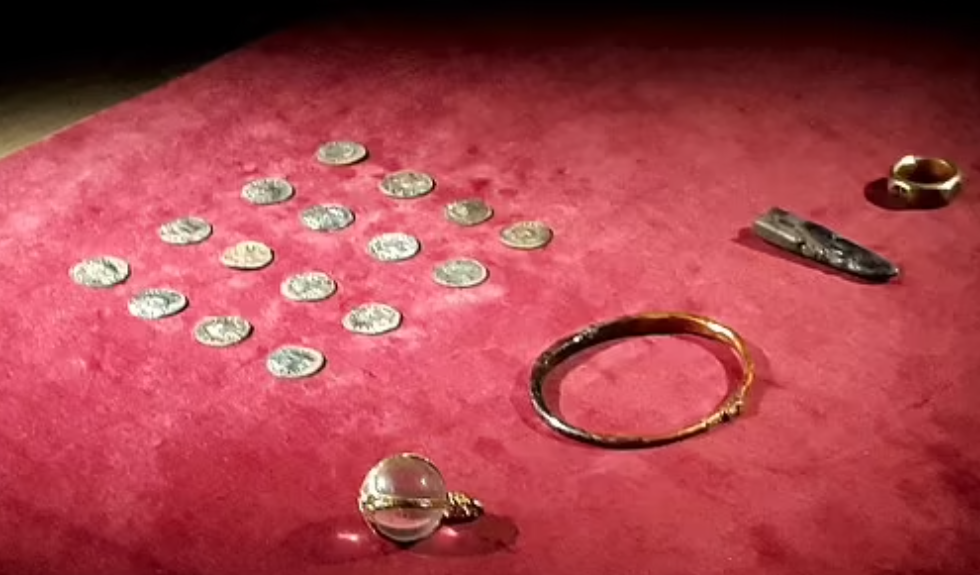Čučkaři 
Traffickers tried to sell Viking coins for 21 million crowns, awaiting trial
Categories: Nálezy nejenom s detektorem ve Velké Británii a Irsku
Seventy-four-year-old Roger Pilling, from Rossendale, Lancashire, and forty-six-year-old Craig Best, from Auckland, face trial at the CrownDurham Crown Court for attempting to sell 21,000,000 coins by stealth, concealing the discovery and conspiracy to illegally sell culturally and historically significant heritage.
The coins are believed to have come from a unique find called the Herefordshire Hoard, a goldgold and silver set, which was discovered in 2015 but was not reported to the Crown as treasure as required by law. Although their finders - illegal detectorists George Powell and Layton Davies - were later jailed, some of the coins have still not been seized. It is alleged that these missing coins somehow made their way into Mr Pilling's collection. So the coins belonged to Pilling, but he supposedly doesn't know their provenance. However, he and Best worked together to sell them.
However, both men denied the charge of conspiracy to sell illegally. They also deny separate charges of possession of criminal property. According to prosecutor Matthew Donkin, both knew that the culturally important coins from the reign of Alfred the Great came from the Viking hoard. The court was told that the value of one of the particularly valuable coins was estimated at £70,000, however the total value of all 44 coins equates to around £766,000
"But it wasn't just the monetary value, it was also the historical and cultural value of the objects," said Donkin, who said they shed light on ninth-century politics and the relationship between Alfred, King of Wessex, and Coenwulf, King of Mercia. Donkin went on to say that the prosecution does not claim that the two men were the original finders of the coins, but someone must have discovered them. "They are extremely rare early medieval coins and were dug up or discovered by someone who chose not to report them."
The dealers were arrested after an undercover police operation when they fooled officers by disguising themselves as a broker and coin expert. According to the indictment, Best took the three coins to a meeting at a hotel bar in Durham. But the whole story of the conspiracy to sell the coins began in 2018, when Best contacted an American professor of radiology at Michigan University and Ronald Bude, a coin collector, who claimed the coins were fake when he first examined them.
This did not please Best, however, whereupon he replied by email, "It's Coin Depot. As you know, this fact can cause me problems. All you had to do was say you didn't want them, and that was the end of it." Best also told Bude that the coins were so good that he would have to fly out to get them. In an email, he wrote: "These coins represent big money, I'll send you a card with all of them if you want. I can see £250,000 for all of them as they are so good."
Dr Gareth Williams, curator of early medieval coins at the British Museum, said the coins date from 874 to 879AD and were minted in Wessex and Mercia. "The majority of the coins are relatively rare cross or lozenge-type coins," Donkin added. "Two of them are the extremely rare Two Emperors type," he added.
According to Williams, the history of the ninth century was almost exclusively written at the court of Alfred, while Coenwulf has been disparagingly described as a puppet Vikingof the. The aforementioned coins prove that there was a financial alliance between Alfred and Coenwulf that must have followed a political alliance. The trial of the two men will probably take place over several weeks.
Roman Nemec
Sources: theguardian.com, msn.com, telegraph.co.uk

Part of Herefordshire's treasure trove

Craig Best

Some of the coins of the Herefordshire Hoard

A similar coin of two emperors has been offered for sale

The hoard also contained this rare polished crystal set in a gold setting as a pendant

Roger Pilling

The hoard also included this beautiful gold ring
The article is included in categories:






